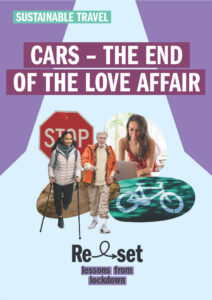The experience of the global pandemic and its fallout constitutes a paradigm shift for transport. And as people experienced some of the positive impacts of reduced transport, from lower levels of air pollution to fewer traffic deaths, governments and transport providers are now exploring alternative ways of getting people from A to B that don’t cost the earth and clog the skies.
During the pandemic we’ve seen transport leadership around the world – rapidly accelerated planning cycles led to fast implementation of cycling, walking or transit infrastructure: the transport modes we need to scale up to tackle the climate crisis.
– Daniel Moser, Senior Transport Specialist at the World Bank
The pandemic has given us a taste of how moving around differently can improve our lives, but to lock-in these sustainable behaviours for the foreseeable, we need to see continued investment into active travel alongside targeted attempts to rid our cities of cars.

This story is part of the Reset series – a collection of short downloadable stories that look in more detail at over consumption and unnecessary travel. They consider some of the key messages and solutions that have become apparent during the pandemic that could help us make the rapid transition to a more sustainable future.
This guide has been made possible by the support of ClimateWorks Foundation.
 As an enabler of people meeting and gathering together, transport found itself in an unprecedented and existential crisis during the global pandemic. From car journeys and riding on public transport, to international air and train travel, COVID-19 affected every mode of transport. Despite the visible rush to get back to the abnormality of pre-pandemic life, our daily travel habits have changed significantly – and perhaps permanently.
As an enabler of people meeting and gathering together, transport found itself in an unprecedented and existential crisis during the global pandemic. From car journeys and riding on public transport, to international air and train travel, COVID-19 affected every mode of transport. Despite the visible rush to get back to the abnormality of pre-pandemic life, our daily travel habits have changed significantly – and perhaps permanently.